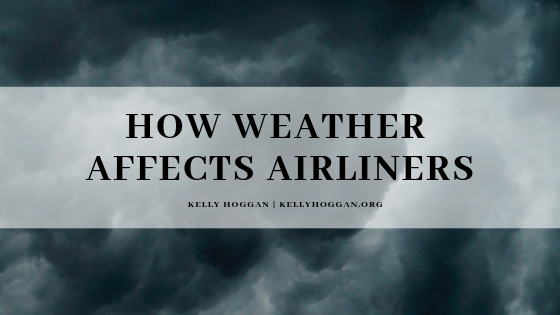If you are a frequent flyer, chances are you have dealt with your fair share of delayed or canceled flights due to weather. With over 26,527 flights taking off daily and flying all over the world, the weather is a huge factor in the timeliness and safety of a flight. Passengers hoping to take off on time aren’t the only ones affected by poor weather conditions. Pilots and aviation professionals must make executive decisions to ensure the safety of a flight during storms and inclement conditions. Weather can impact multiple aspects of a flight and lead to crashes if the proper precautions are not taken. A combination of procedures, pilot knowledge, and technology should all be taken into consideration when discussing the safety of a flight and weather-related issues. Here is an overview of how weather affects airlines, and what is done to detect and protect flights from inclement weather.
Inclement weather is unavoidable and sometimes unpredictable. However, whether flying commercially or privately, it is the responsibility of the pilot to check all conditions before a flight. Most weather threats in aviation can be broken down into one or several of the following categories: reduced visibility and low clouds, wind, ice and snow, and thunderstorms. Pilots need to be aware of any possible threats that could take place throughout their desired flight path, and make adjustments as needed.
Wind is usually one of the largest concerns pilots face, as gusty crosswinds can be detrimental for takeoff and landing. Any change in wind speed or direction can result in sudden reductions in lift and a change in how the pilot handles the aircraft. Fortunately, pilots and airlines have resources to use to detect wind threats. The FAA uses alert systems to notify pilots of any shifts in wind direction. The “Airborne Wind Shear Detection and Alert System” was added to commercial aircraft in 1993 to predict changes in wind direction. Additionally, all major airports have their own Doppler radar systems that provide minute-by-minute updates to changes occurring on the radar.
Aside from the wind, the cold weather, snow, and ice associated with winter months can wreak havoc at airports. Usually, cold weather isn’t enough to cause a delay or change in flight schedules. In fact, cold weather is optimal for an aircraft’s efficiency. However, with cold weather comes snow and ice, which can be quite problematic. Snow and ice on the runway can affect the planes ability to take off safely. Often, it takes crews a considerable amount of time to clear a runway, thus delaying flights. Even more detrimental is snow and ice on the plane. Any type of snow or ice build up on top of the plane and its wings can alter the aerodynamics and airflow of the aircraft. Specific measures are set in place to deice and treat a plane before takeoff is approved.
Lastly, thunderstorms and those that include hail or lightning can cause issues for both grounded aviation personnel and pilots flying. While lightning is not a top concern for flights in the air, it can slow procedures down on the ground as crew members prepping the plane will need to come inside. Hail can be extremely disastrous for both grounded and in-flight aircraft. Pilots will need to re-route around thunderstorms to avoid potential threats.
Weather is uncontrollable, but through technology and help from radar and air traffic controllers, pilots and aviation professionals can monitor conditions prior to departure. Still, weather can affect airlines significantly and remains an unstoppable threat in the industry.
Kelly Hoggan resides in Washington D.C. and is the founder of H4 Solutions, a business which provides aviation security consulting services. With a career spanning nearly three decades in aviation security, operations, and technology, Kelly has been able to utilize that leadership experience to advise clients in the transportation section focusing on aviation security and aviation operations.


